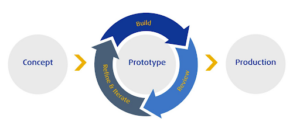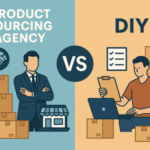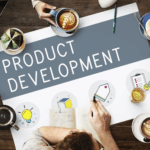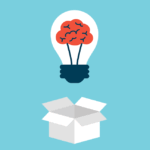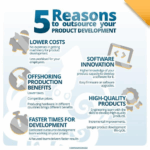Turning an idea into a tangible product is often seen as a Herculean task. However, with the right roadmap, even the most abstract concept can materialize into a profitable product. In this comprehensive guide, we will explore how to turn an idea into a product and how to manufacture a product idea, making the journey from imagination to innovation as smooth as silk.
The Power of a Good Idea
Every groundbreaking product begins as a mere spark of inspiration. According to Forbes, around 90% of startups fail, but those with well-executed product ideas stand a better chance of success. So, how to turn an idea into a product that stands out in the market?
Successful entrepreneurs recognize the importance of solving real-world problems. When you think about companies like Apple, Tesla, or Airbnb, they all started with an idea that addressed a need or improved upon existing solutions. A strong product idea should fill a market gap, offer innovation, or enhance user experience. After all, “necessity is the mother of invention.”
Step 1: Research and Validation
Before you dive in headfirst, it’s essential to gauge the market viability of your idea. According to a report by CB Insights, 42% of startups fail due to a lack of market need. Conducting market research can help you understand consumer demands, competition, and potential challenges.
Conducting Market Research
Market research involves gathering data on consumer needs, preferences, and behaviors. Here are a few ways to conduct effective research:
- Surveys and Questionnaires: Ask potential customers what problems they face and how they would like them solved.
- Competitive Analysis: Study existing products in the market and identify gaps that your product can fill.
- Industry Reports: Use data from sources like Statista and IBISWorld to analyze trends and consumer behaviors.
By validating your idea early, you avoid the common pitfall of investing time and resources in a product that lacks demand. “A stitch in time saves nine.”
Step 2: Design and Prototyping
Creating a prototype brings your idea to life. It’s like painting the town red—bold, expressive, and crucial for attracting initial interest. Whether it’s a simple sketch or a 3D-printed model, your prototype will be the cornerstone of your product development process.
Why Prototyping is Crucial
- Helps secure funding: Investors and stakeholders are more likely to support a tangible concept.
- Identifies design flaws: Testing a prototype helps refine product usability and function.
- Enhances communication:: It enables the physical model to effectively convey the product to its manufacturers and partners.
There are various types of prototypes:
- Sketches and Wireframes: Simple visual representations of our concept.
- 3D Printed Models: A cost-effective method to create designs.
- Functional Prototypes: These are operational prototypes used for testing and refinement.
Step 3: Funding Your Project
Money is essential for transforming an idea into a product. Explore crowdfunding platforms like Kickstarter or seek angel investors to support your project. In 2023, Statista reported that crowdfunding raised over $17 billion globally.
Funding Options
- Bootstrapping: Utilizing personal savings to finance development.
- Crowdfunding: Attracting backers through platforms like GoFundMe or Indiegogo.
- Angel Investors & Venture Capitalists: Finding investors who focus on funding startups.
- Small Business Loans and Grants: The government offers different schemes for small businesses. With a good campaign, funds will flow, and the public will show interest in your project. Don’t keep all your eggs in one basket; look for different funding sources.
Step 4: Choose the Manufacturer
Finding the right manufacturer might be as difficult as finding a needle in a haystack; getting the right quality and price is vital in making your product idea a success.
What are some of the factors to consider in selecting your manufacturer?
- Location: Easily, one can communicate best and control quality by having domestically located manufacturers, whereas overseas manufacturers may give a cost advantage.
- Production Capabilities: This covers the design, materials, and expectations of scaling your product for your manufacturer.
- Quality Control: Samples should be requested and compared with the defined quality.
- Minimum Order Quantities (MOQs): For start-up companies, some target volumes might be unattractive.
Step 5: Testing and Quality Assurance
Testing is a very significant word for something that will be put on the market. If the test is bad, it would lead to a recall, a bad reputation, and financial loss. Research conducted by the Harvard Business Review indicates that 80% of new products fail due to poor quality or failure to meet consumer expectations.
Quality Control Checklist
- Material Testing: Test for conformance to industry standards.
- Functionality Tests: Test for performance as required.
- User Tests: Test the design with feedback from the user’s perspective.
- Safety Tests: Conform to mandatory regulations in your industry.
Better safe than sorry—where quality assurance is worth its weight in gold before a launch.
Step 6: Marketing and Launch
When the product is ready, everything else now revolves around marketing. With the help of social media, email campaigns, and influencers, make it all the rage. According to research by HubSpot, companies that blog generate 67% more leads than those that don’t.
Developing a Strong Marketing Strategy
- Brand Positioning: Brand Positioning: What are the unique features of this product?
- Online Advertising: Google Ads and social media targeting.
- Content Marketing: Authority is built through blogs, videos, and educational content.
- Public Relations (PR): Media coverage and press releases boost credibility.
- Influencer Marketing: This strengthens the brand identity by gaining support.
“Strike while the iron is hot”—launch your marketing campaign with confidence.
How to manufacture a product idea requires patience, but the rewards can be immense. Visit Brand New MD for expert advice on taking your product from concept to consumer.
Final Thoughts
Success in product manufacturing doesn’t come overnight. It’s a marathon, not a sprint. With the right strategy and execution, you can transform your idea into a profitable reality. Ready to take the plunge? Dive into the world of innovation and watch your ideas come to life! Ready to turn your idea into a successful product? Start your journey with BrandNewMD today and transform your vision into reality!



